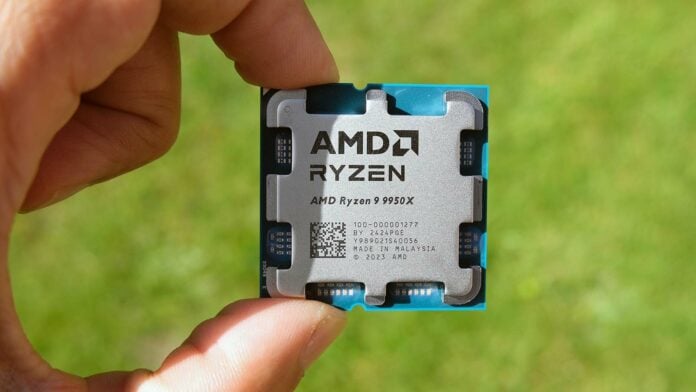The Ryzen 9000 Series CPUs arrived in staggered fashion in the last two weeks. First came mainstream Ryzen 7 9700X and Ryzen 5 9600X, followed by Ryzen 9 9900X and big chief Ryzen 9 9950X. This Zen 5-powered chip quartet represents the full desktop reveal until inevitable cache-laden X3D parts arrive in upcoming months.
Aside from performance boosts emanating from improved architecture, AMD plays the Zen 5 desktop game very safe by sticking with the same core-and-thread counts as on Ryzen processors from the previous five years. An opportunity missed, some would say, especially with rival Intel experiencing headwinds.
Nevertheless, plumbed with a 170W TDP. the 16C32T Ryzen 9 9950X basket of silicon goodies is enough for it to become the finest productivity and rendering desktop chip, tugging the crown away from AMD’s own Ryzen 9 7950X and Intel’s Core i9-14900K. Club386’s head-to-head comparisons illustrate this point all too clearly. 9950X is also pretty good at gaming, putting up a commendable showing against the Ryzen 9 7950X3D.
I know that taming a 170W TDP (CPU power budget) and 230W PPT (platform power budget) is no easy task. I recommend only the finest air coolers and, if it was my build, a decent liquid AIO. But I’m a curious person by nature. I want to know how well Ryzen 9 9950X performs when the power budget is reduced significantly.
16 Cores On A Diet
Manually limiting TDP opens the path for this head honcho chip to be used in small-form-factor chassis or run incredibly quietly in your normal rig. Heck, as Parm ably demonstrated, one can build the ultimate passive PC when running the processor at 65W. I like the sound of that, if you excuse the egregious pun.
Starved of TDP and PPT, Ryzen 9 9950X surely won’t perform as well as in unrestrained mode. That much is obvious. But how much do you lose and is the deficit from stock worth it when doing so enables other benefits. Of course, you can simply switch back to full-power mode easily should productivity beckon.
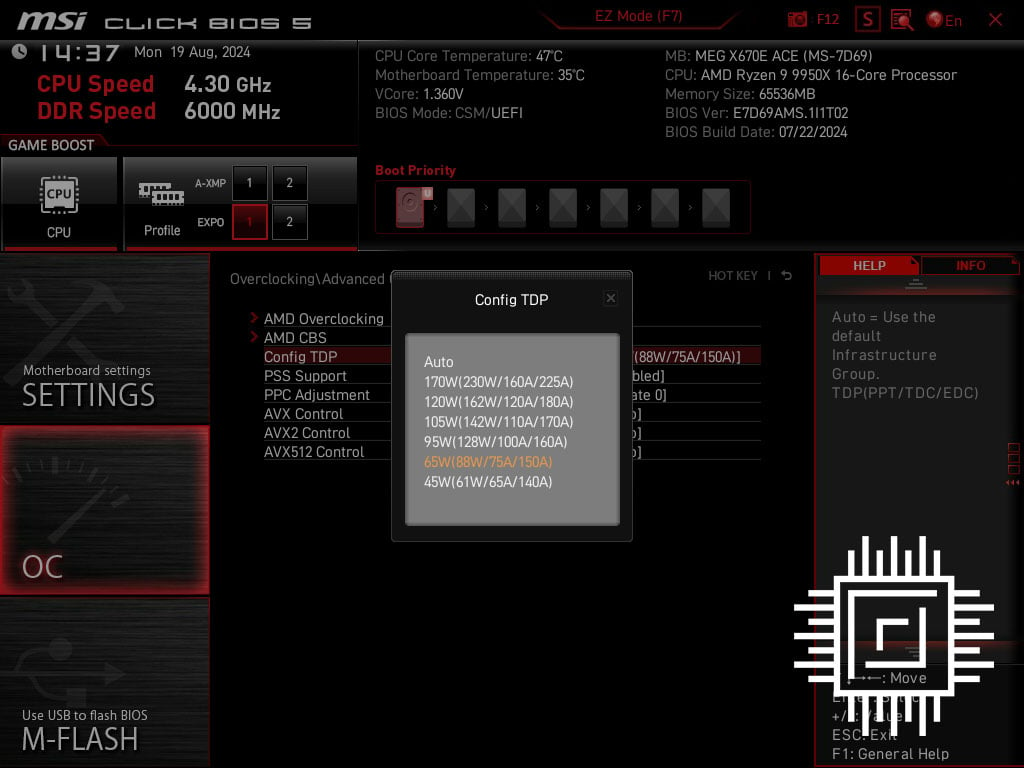
Changing the chip’s TDP is remarkably straightforward in my MSI MEG X670E Ace motherboard. The surest way of dialling in the required settings is by navigating into the BIOS, hitting up the OC tab, and then heading over to Advanced CPU Configuration subpage. Et voila, the Config TDP options present themselves.
MSI allows for eight distinct settings that provide a hard power wall the processor butts against. If you’re wondering, Auto replicates the 170W/230W/160A/225A setting you see below. And that’s it. Save and head into Windows.
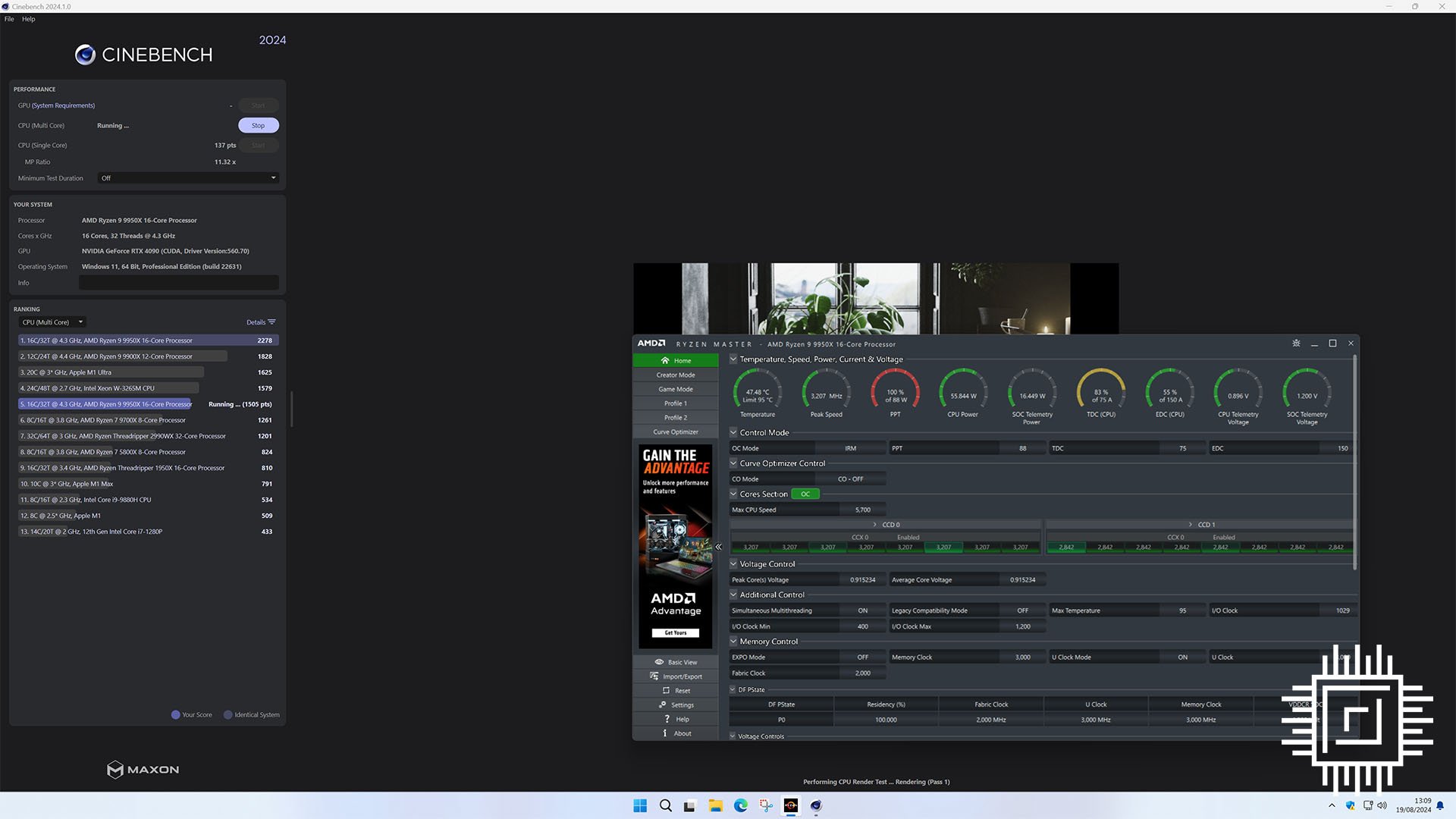
My settings sanity check is running Cinebench 2024 multi-thread with Ryzen Master in the foreground. Here’s where it gets interesting for a CPU nerd like me. The application tells the processor to give me all you’ve got, captain, and Ryzen 9 9950X’s power-management unit knows it cannot exceed the BIOS parameters. As soon as the processor hits one of the limits, that’s it; there’s no more to give.
What you see is that the ceiling is imposed by smacking up against the PPT threshold of 88W. Ryzen 9950X is a three-chip solution comprising dual CPU CCDs and an IOD. Lighting these constituent parts when running an all-core application is taxing from an energy perspective. So much so, in fact, that the 16 Zen 5 cores are left with only 55W to play with. That’s really not much when 32 threads are on the go. Compare this with the full 170W when run in normal mode.
Keeping to a 55W CPU limit is painful for Ryzen 9 9950X. Using Cinebench as the load, here is how the standard and wattage-restrained scenarios pan out from a frequency and voltage perspective.
| CPU | All-core frequency | Average voltage |
|---|---|---|
| Ryzen 9950X @ 170W | 5,001MHz | 1.229V |
| Ryzen 9950X @ 65W | 3,024MHz | 0.915V |
There’s clear divide between the processor run in these two states. One loses practically 40% of the frequency albeit with a near-70% reduction in CPU power.
The good news, however, is that single-thread speed is impacted much by pushing down the TDP, suggesting that gaming performance won’t suffer too much. As always, the proof of the pudding is in the eating. Let me get to it.
Performance
As usual, with a new platform, I do away with all our previous tests and conduct benchmarks from square one. This way, I keep all variables to a minimum and can see a true picture without any extraneous factors.
Ryzen 9 9950X rests on an MSI MEG X670E Ace motherboard with the latest BIOS update. In both states it is cooled by an Arctic Liquid Freezer III 420, powered by be quiet! Dark Power 13 1,000W, and sits alongside a Zotac GeForce RTX 4090 graphics card and 64GB (2x32GB) Kingston Fury Beast DDR5-6000 CL36 RAM. To put it bluntly, nothing other than TDP changes.
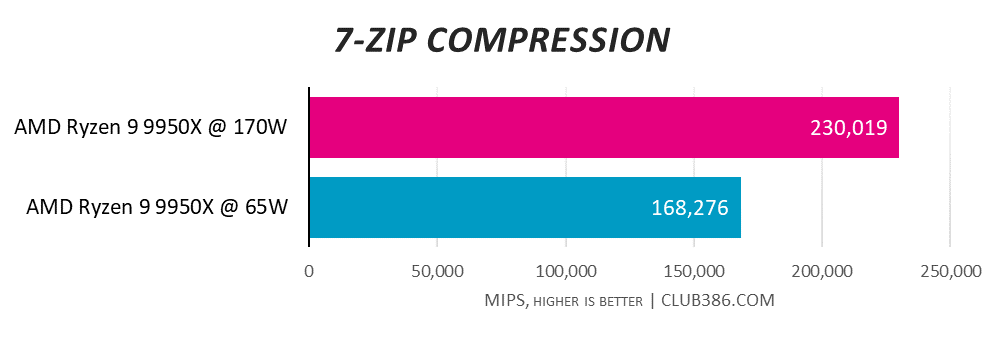
The 65W chip puts in a commendable showing straight off the bat. That lovely lower wattage results in 27% less performance. I suggest you head to the original Ryzen 9 9950X review to cross-check how the 65W chip compares to other modern processors run at their stock settings.
What you see is that 65W 9950X is almost as fast as Ryzen 9 9900X and Core i7-14700K. Not bad at all.
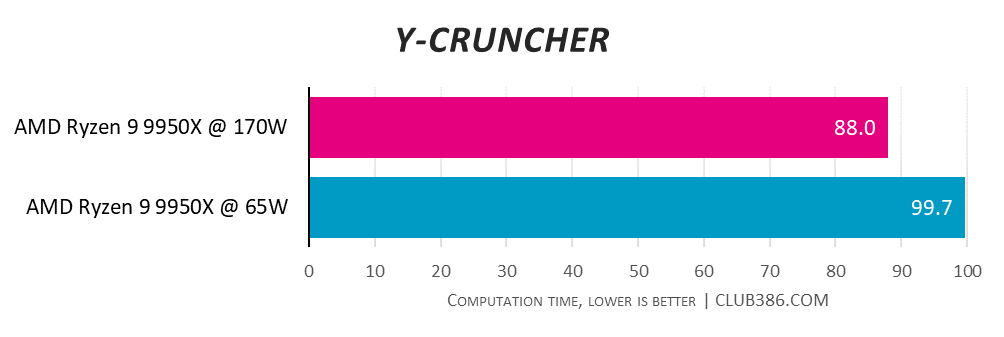
In Y-cruncher, meanwhile, you don’t lose a lot by reducing wattage. The 65W is actually substantially faster than an all-guns-blazing Core i9-14900K!
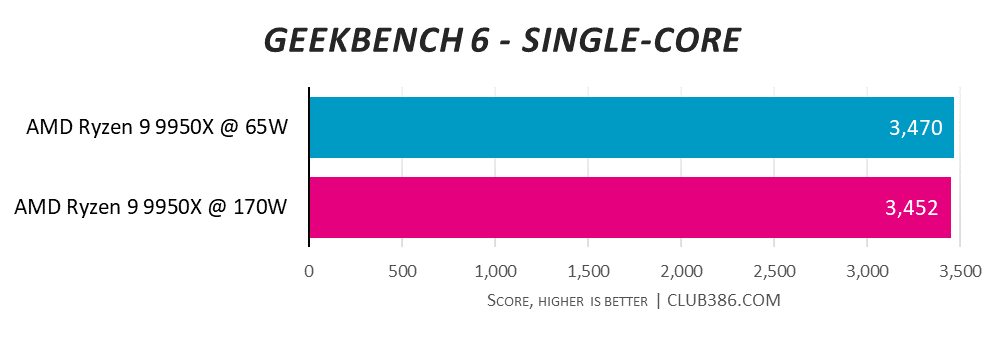
Here’s the first evidence that single-core speed is unaffected by reducing TDP. Makes sense, too, as a single core can still scale to nearly 6GHz when the chip is contained within a 65W TDP. In fact, it’s very slightly faster in this case.
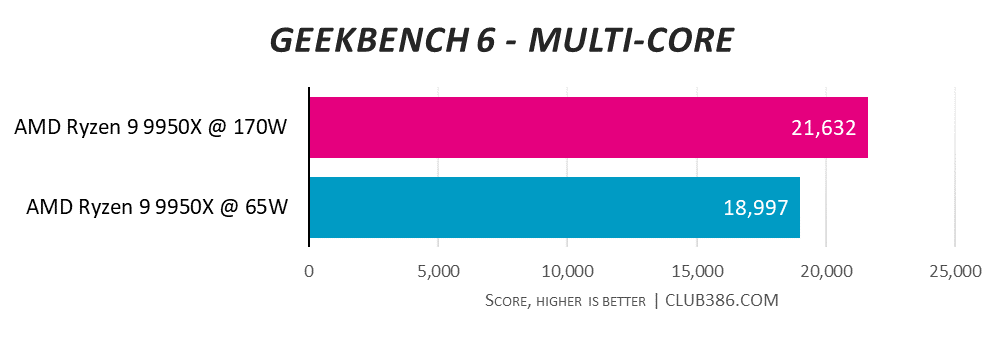
Geekbench 6’s multi-core test doesn’t scale as well as other benchmarks. Good news for the 65W; it gets pretty close and, looking wider, is close to 9900X.
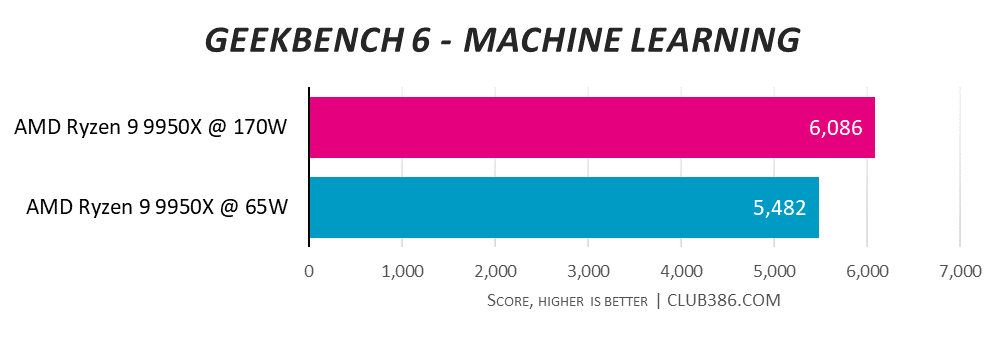
Ryzen 9000 Series are adept at the machine learning test because of the way in which Zen 5 handles the necessary data types. The 65W chip is almost as quick as the Intel Core i9-14900K running at full chat.
Rendering
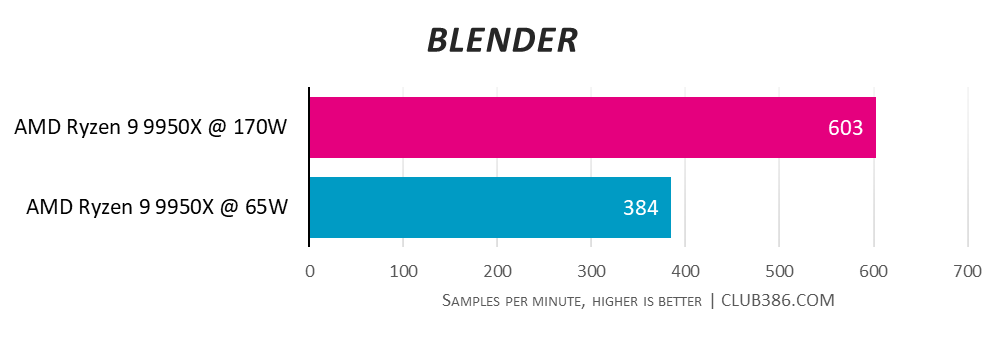
Blender loves cores and frequency above all else. There’s an obvious divide here, evidenced by the 170W stock chip running 57% faster. If you’re running heavy-duty rendering tasks, best stick with full-power mode.
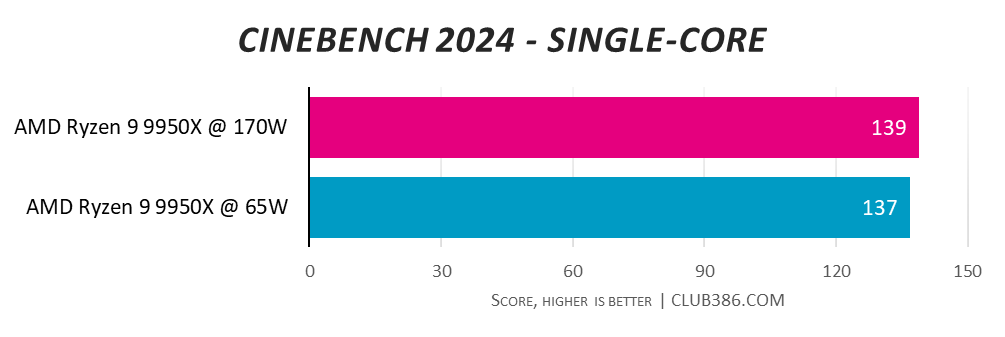
Another indication that single-threads performance doesn’t suffer.
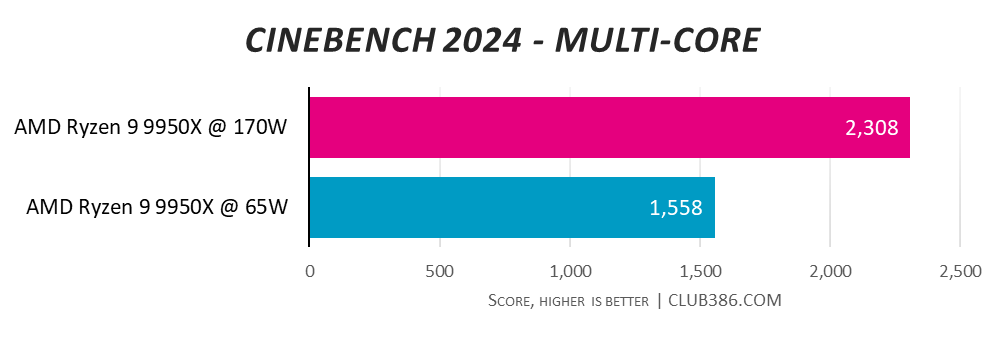
The 1,558 score makes Ryzen 9 9950X perform like a 10-core chip, not the 16 cores it has its disposal. For reference, a Core i7-14700K manages 1,938 marks.
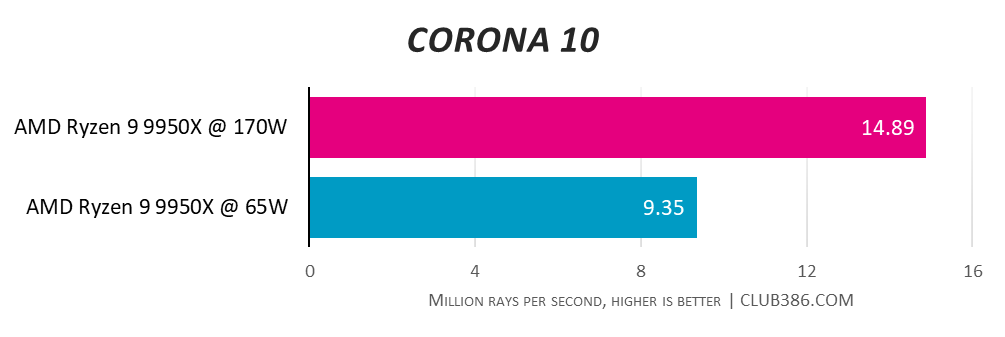
I’m seeing 37% less performance for the 65W mode, putting the chip in the general vicinity of the Core i7-14700K.
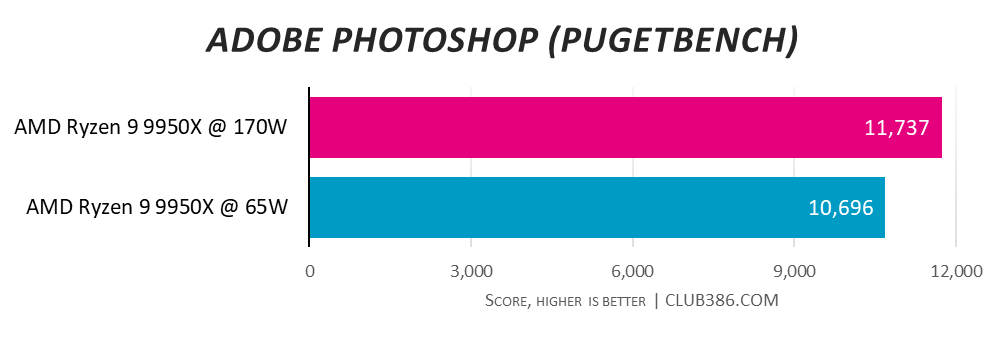
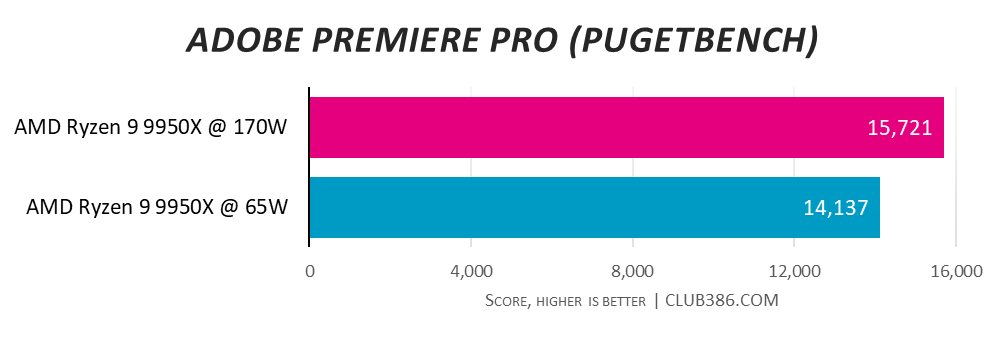
There’s less of difference in popular Adobe applications because the tests are not nearly as threaded. Putting it a different way, 65W performance is as good as any Intel Core chip.
Memory
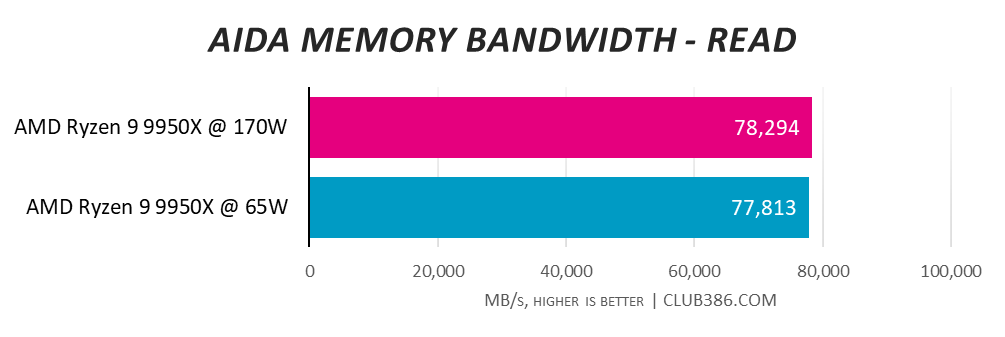
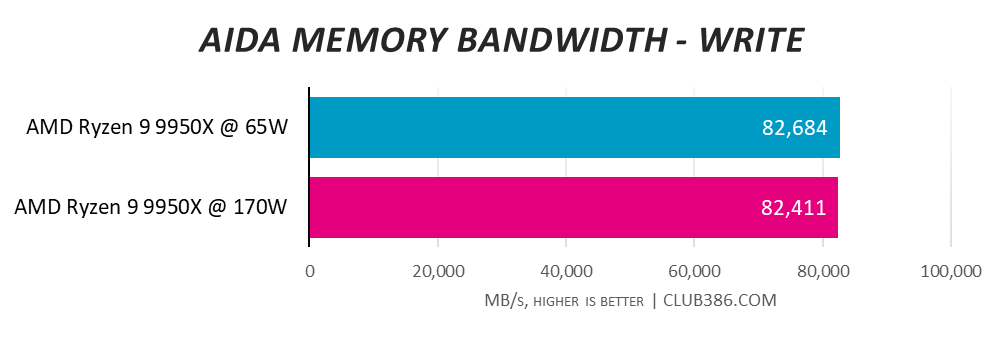
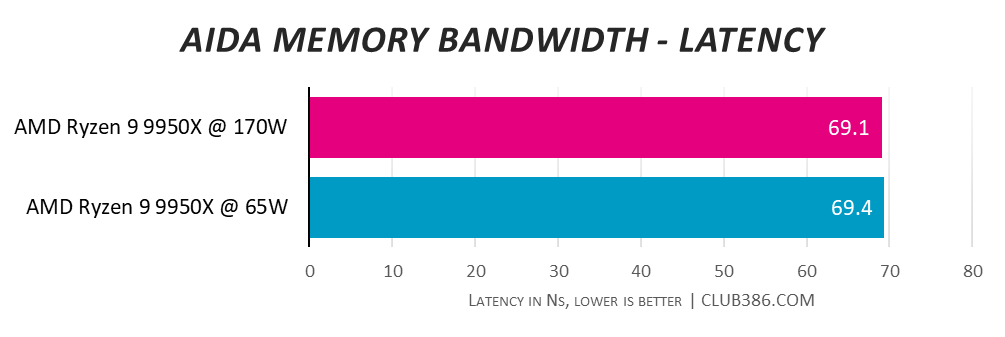
I wouldn’t expect changes in memory performance because the benchmark is generally oblivious to core wattage.
Gaming
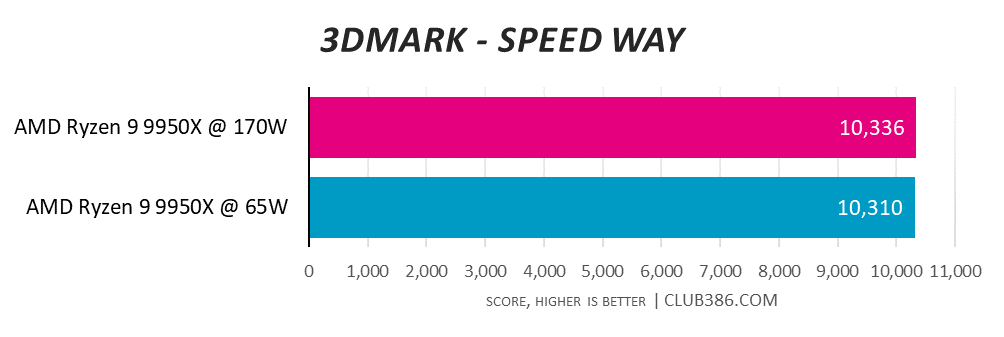
I bet this is what many of you really want to know, that is, whether fps goes down when operating in de facto Eco mode.
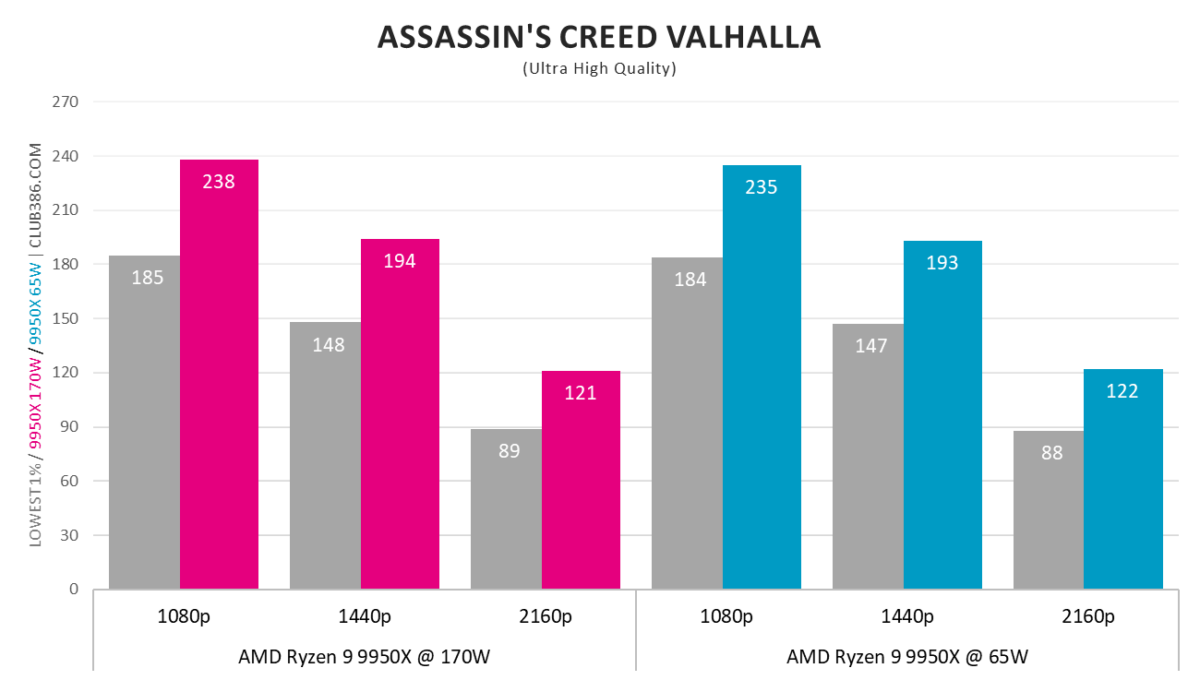
There is a slight difference between the pair in Assassin’s Creed Valhalla, observed at FHD, but you’d never visually feel it.
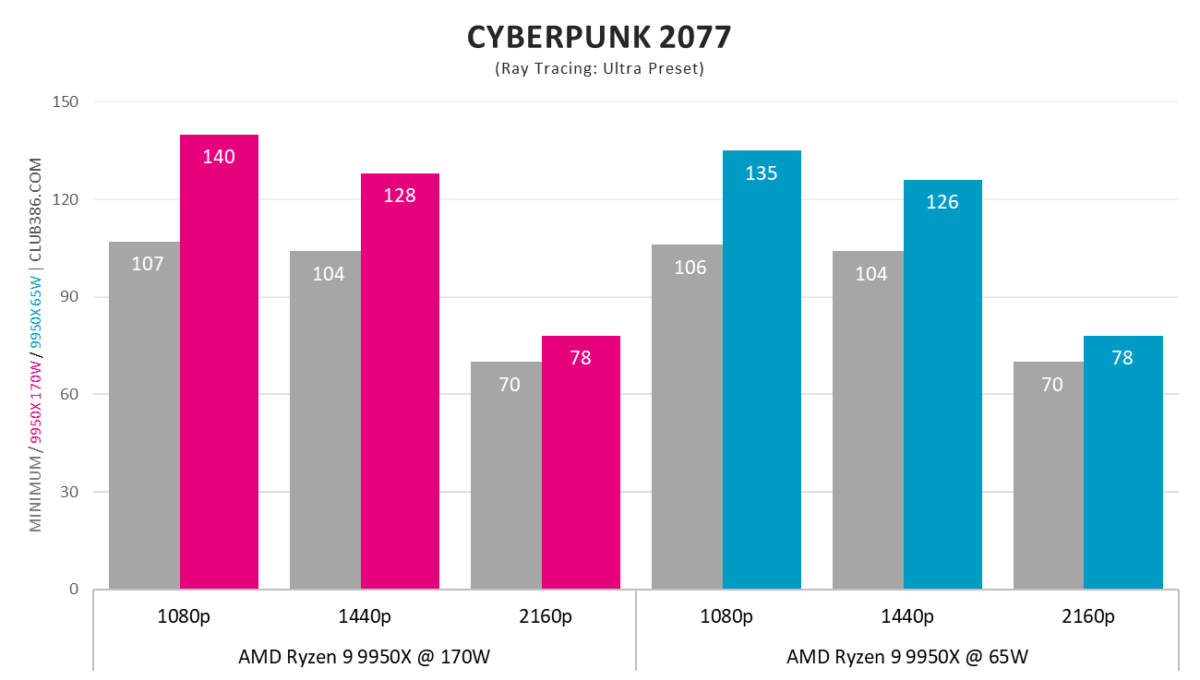
Cyberpunk 2077 makes use of more cores and therefore can expose the 65W limit a little more. Nevertheless, I still maintain you won’t see or feel a difference. You also have to remember that I’m using a GeForce RTX 4090 GPU that naturally magnifies subsystem inadequacies more than any other graphics card.
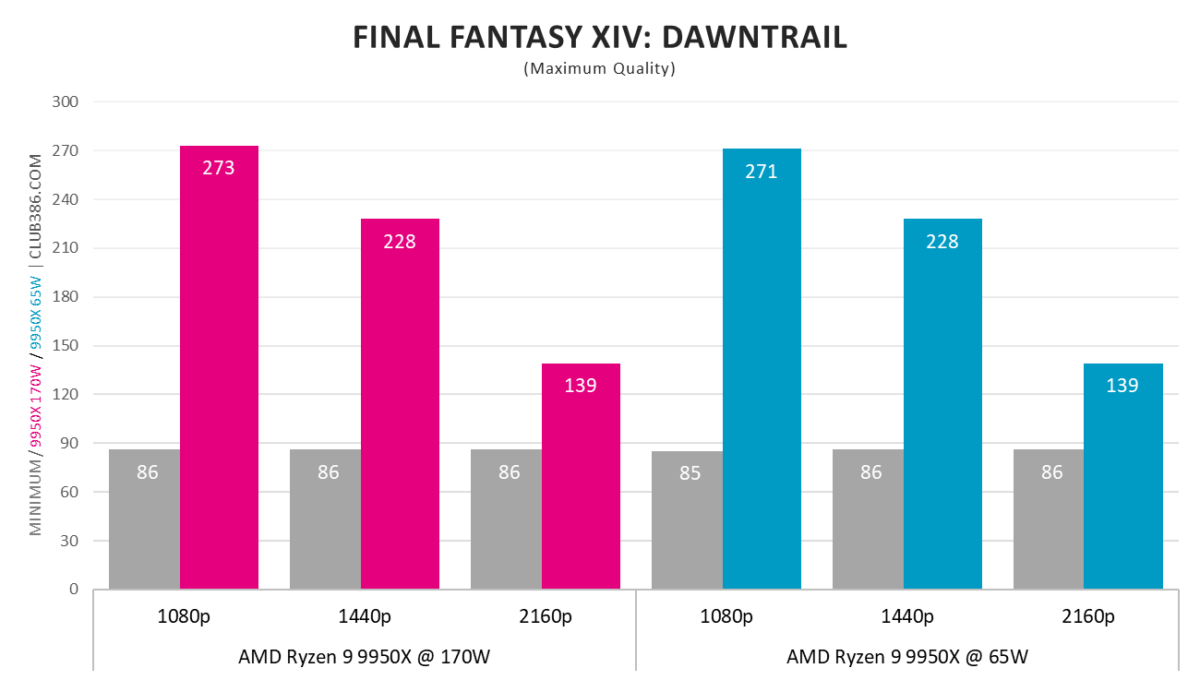
65W or 170W. Final Fantasy XIV: Dawntrail doesn’t really care.
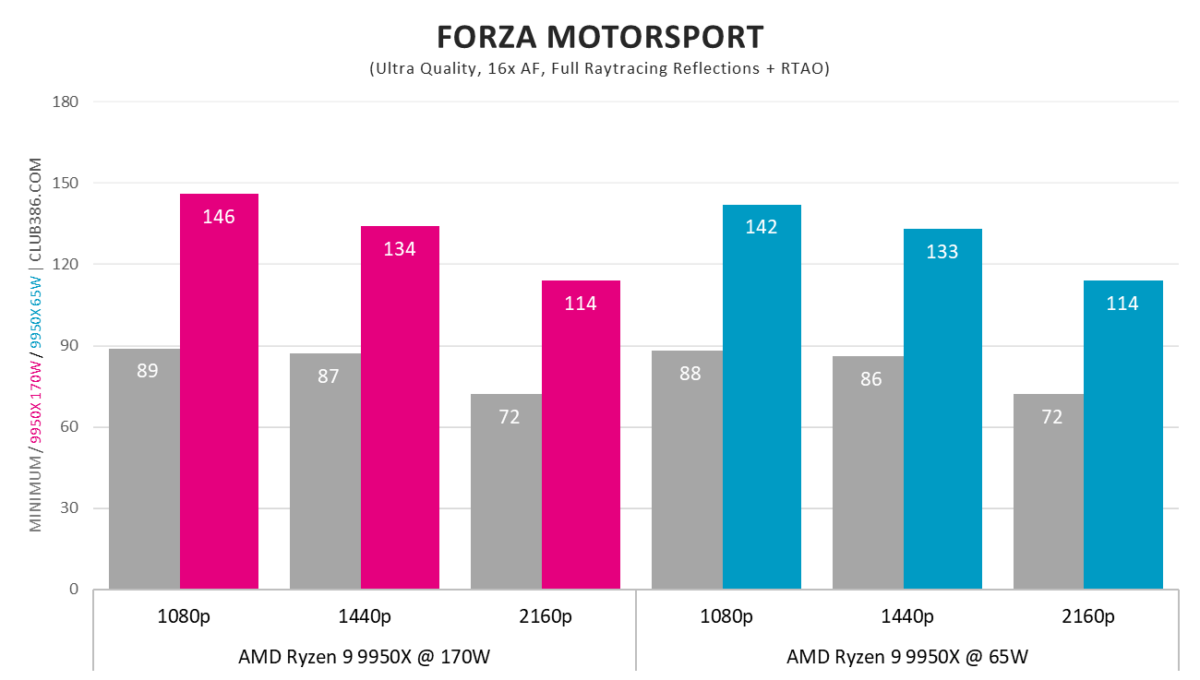
What’s more, minimum framerates remain robust.
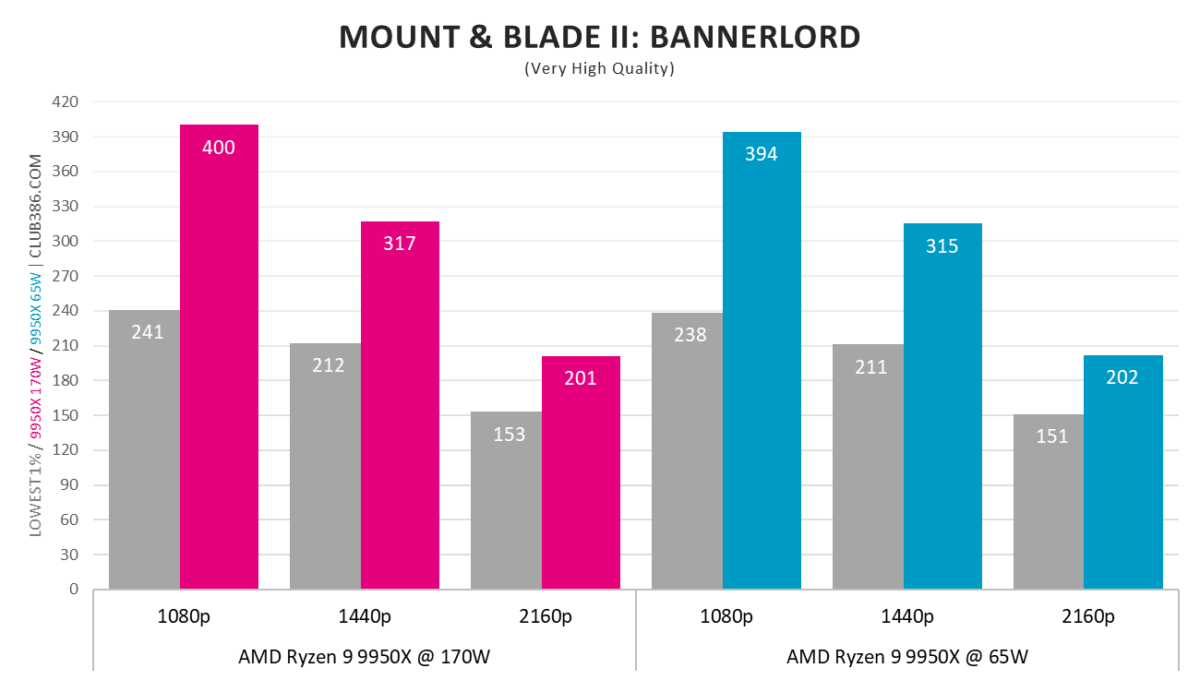
I believe there’s now adequate proof that reducing Ryzen 9 9950X’s wattage from 170W to 65W doesn’t overly impact gaming performance.
Vitals and Efficiency
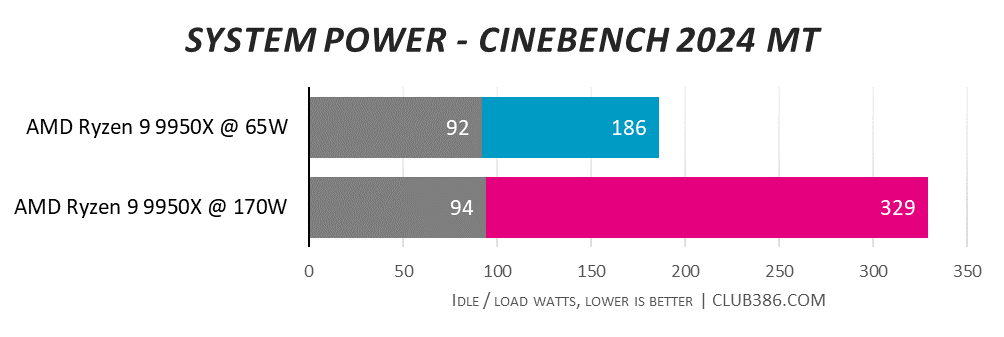
So why do all this? Ryzen 9 9950X remains a better processor at its native 170W. Here’s one very good reason. System-wide power consumption is nearly halved when toggling modes. As I alluded to earlier, not only is it great for your energy bills, but you can also make the system eerily quiet.
After this testing, in 65W mode, I manually adjusted the PC’s fan curves such that when running productivity and rendering tasks it’s practically inaudible from a few feet away. I like to hear the wind whistle through the trees when I’m working in the office. Energy-efficient Ryzen 9 9950X allows me to do so, even when rendering.
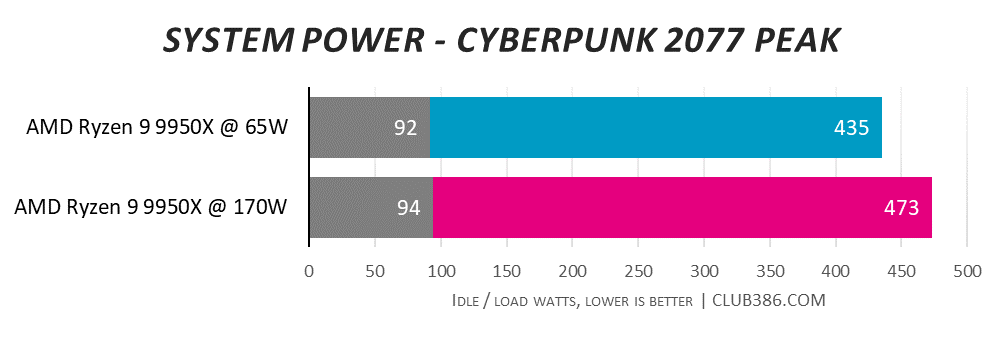
There’s also a little energy saving when gaming. Cyberpunk 2077’s peak wattage is 38W lower. That’s not a lot, but as a British supermarket likes to say, every little helps.
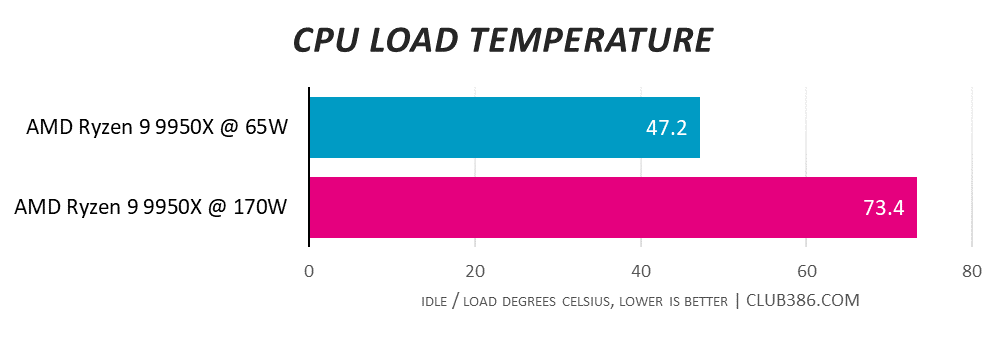
Evaluated after a 10-minute run of Cinebench 2024 MT, there’s a fantastic saving in temperature when run under a capable AIO. 47.2°C is practically cold for a modern processor.
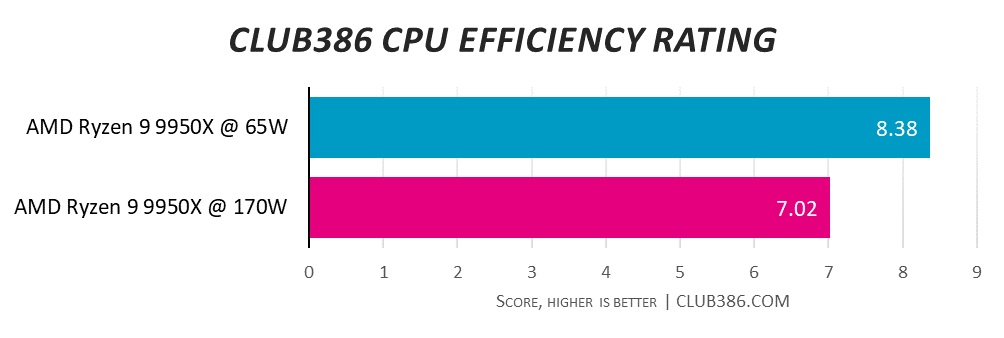
Dividing the Cinebench 2024 MT score by system power consumption leads to this graph. What you lose in pure performance is more than offset by gains in efficiency.
Conclusion
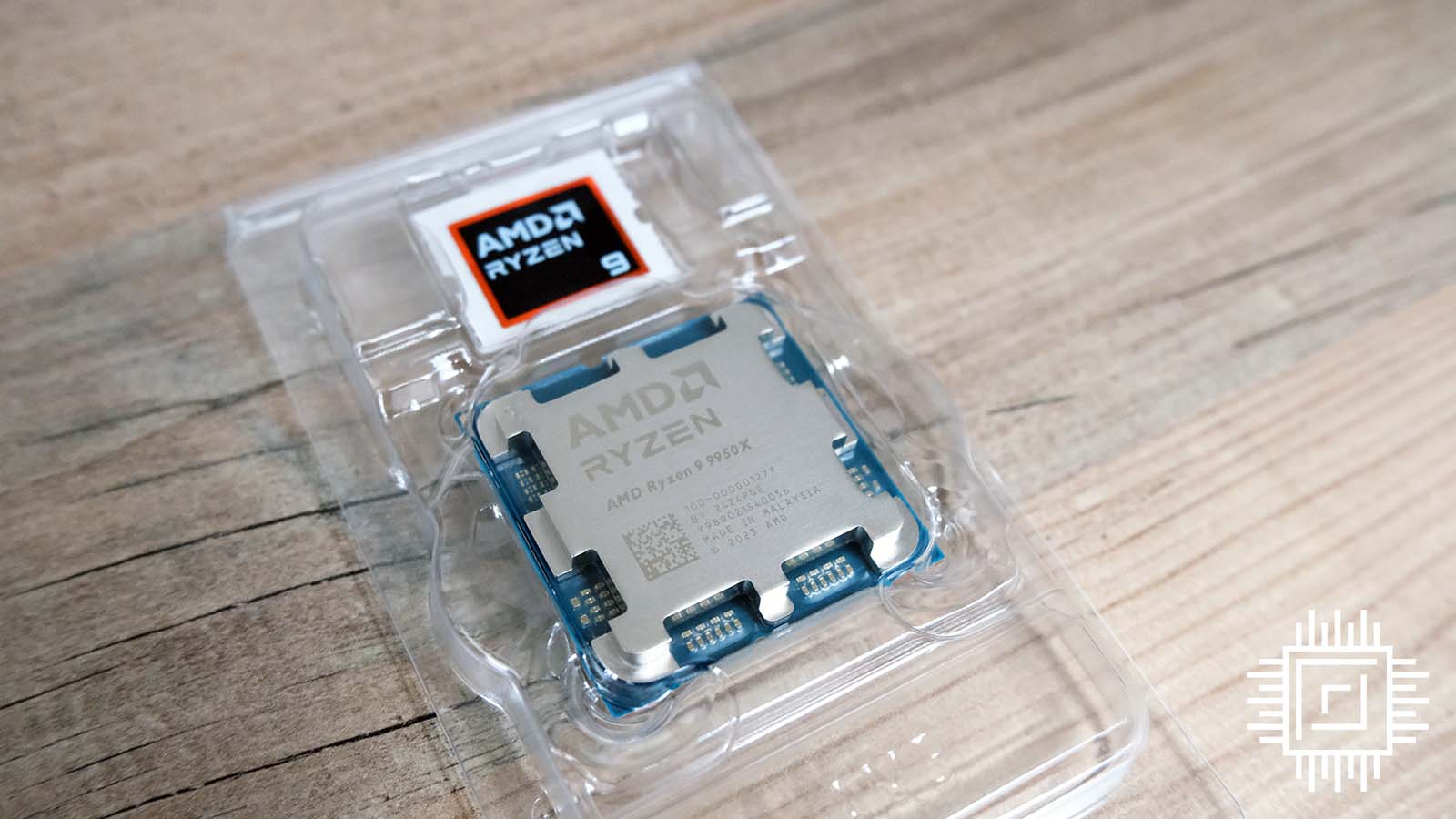
Let me be abundantly clear. Getting the most out of your shiny, new Ryzen 9 9950X means running it at stock settings. Doing so reveals it’s a highly competent chip capable of making mincemeat of applications and gaming alike. If I was building a new PC from scratch, this is probably the chip I’d go for.
That being said, you need decent cooling to stop it from running too hot, which is absolutely normal when dealing with a flagship processor. But there is an easy way of giving up some performance in the quest for lower power and much-improved temperature. Enter Eco mode. Reducing nominal wattage all the way down from 170W to 65W exposes preferential points on the voltage/frequency curve, even for a dual-CCD headline chip such as Ryzen 9 9950X.
Operating in 65W does little to dampen gaming performance because most games don’t use more than a few threads at any one time. Core-heavy applications do suffer, of course, yet I’ve proved the drop-off isn’t as severe as you might expect.
Performance at vastly lower TDPs also suggests that AMD’s on the right track with Zen 5-toting Strix Point silicon, set to power a wide range of performance laptops, so there’s intrinsic merit in the new architecture.
Benefits accrue from whisper-quiet running and ability to operate in space-constrained environments. Those are incentive enough for me to at least dabble in 65W model, particularly as I like my PCs to be seen and not heard.
I come away from this examination content in the knowledge that Ryzen 9000 Series CPUs are a safe bet for any modern PC, be it a gargantuan tower or itty-bitty chassis tucked neatly away in the corner.
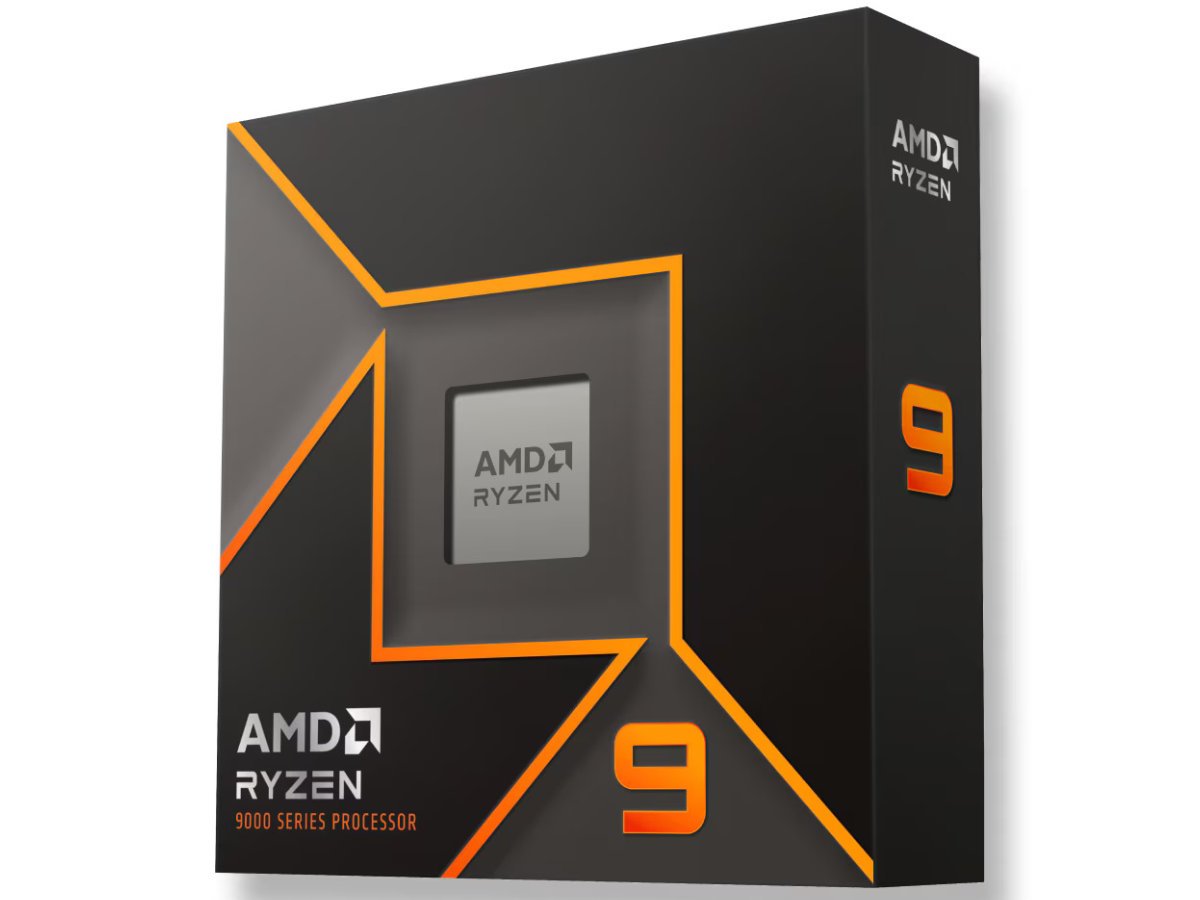
AMD Ryzen 9 9950X
“Relish in the speed that the world’s most advanced desktop processor can provide. It doesn’t matter if you’re working hard or gaming hard, the AMD Ryzen 9 9950X processor is an absolute powerhouse.”
We earn a commission if you make a purchase, at no additional cost to you.

